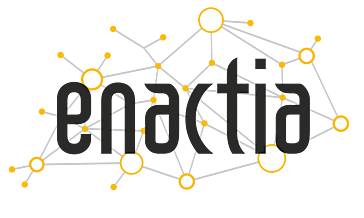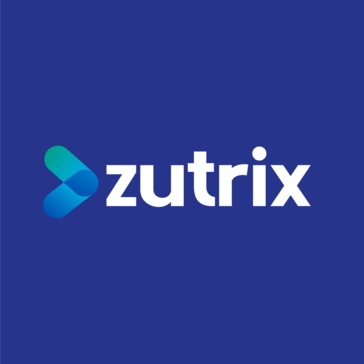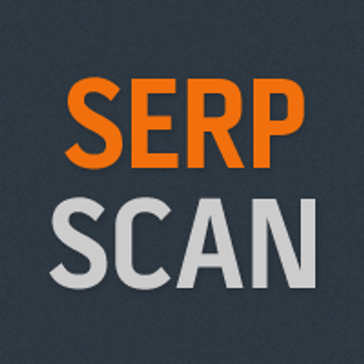4.15
Octopai Review
Discover Octopai’s data lineage strengths, security, and automation in our review. We cover pricing, updates, support, and value for money. See if it fits your needs!
Comprehensive overview and target audience
Following our introduction, lets delve deeper into Octopai. It serves as an automated data intelligence platform, primarily focused on delivering cross platform data lineage, comprehensive data discovery, and a robust data catalog. Think of it as a detailed map for your organization’s complex data highways, providing clarity where confusion often reigns. Its core function is to automate the painstaking process of manually tracing data flows, saving valuable time and reducing the potential for human error within intricate data environments.
The primary target audience for Octopai encompasses professionals deeply involved in the data lifecycle. This includes:
- Data engineering teams needing to understand impact analysis before making changes.
- Business intelligence analysts requiring trustworthy data sources for accurate reporting.
- Data governance and compliance officers who must ensure regulatory adherence like GDPR or CCPA.
- IT managers overseeing complex database structures and ETL processes.
Essentially, any organization struggling with data visibility, operational efficiency in data tasks, or stringent compliance requirements will find Octopai relevant. It is particularly beneficial for companies with diverse, multi vendor data stacks where manual tracking becomes practically impossible.
Assessing the platform involves considering several key factors. Prospective users often examine the Octopai value for money; it positions itself as a significant time saver and risk reducer, translating into tangible ROI despite the investment. Constant improvement is evident, as regular Octopai updates and new features enhance its analytical power and expand compatibility. Security is also paramount; robust Octopai security features are built in to protect sensitive metadata information, a critical consideration for all potential clients. While a direct Octopai pricing comparison against alternatives shows varied models across the industry, Octopai emphasizes its comprehensive automated approach. Furthermore, effective utilization is supported through dedicated Octopai support and training resources, ensuring teams can maximize the platform’s benefits quickly.
In essence, Octopai aims to be the central nervous system for understanding enterprise data flows. It provides automated insights that empower data professionals to work faster, smarter, and with greater confidence in their data’s integrity and lineage, moving beyond guesswork to verifiable knowledge. Its suitability hinges on the scale of data complexity and the organizational need for automated data intelligence.
User experience and functional capabilities
Delving into the Octopai user experience insights reveals a platform designed with data professionals in mind. The interface aims for clarity, presenting complex data lineage and discovery findings in a visual, navigable format. While the sheer volume of information can initially seem daunting, users generally report a positive learning curve, especially appreciating the graphical representation of data flows which simplifies understanding intricate connections across multiple systems. Understanding how to use Octopai effectively often involves leveraging its search capabilities and interactive diagrams to trace data origins, track transformations, and perform impact analysis with relative ease. The automation eliminates significant manual effort, which is a recurring positive point in user feedback.
The initial setup process is guided, though not without its nuances. Following the Octopai implementation guide is crucial for ensuring all necessary metadata sources are connected correctly. This typically involves configuring collectors for various databases, ETL tools, and reporting platforms within the organization’s data stack. The success of the implementation hinges on accurately mapping the existing environment. Some common problems with Octopai can arise during this phase, particularly in highly customized or unconventional data architectures, requiring close collaboration with their support or professional services team. Ensuring proper credentials and network access for the Octopai collectors is a prerequisite step detailed in the guide.
Functionally, Octopai excels in its core mission: providing automated, cross system lineage and discovery. Integrating Octopai with other tools is a key strength; it supports a wide array of technologies, from traditional SQL databases and data warehouses to cloud platforms and BI tools. This broad compatibility ensures comprehensive visibility across diverse ecosystems. The platform continually evolves, with regular Octopai updates and new features enhancing its analytical capabilities, expanding connector support, and refining the user interface based on feedback. These updates are vital for keeping pace with the rapidly changing data landscape and addressing user needs.
To maximize the platform’s potential, adopting best practices for Octopai usage is recommended. This includes:
- Regularly reviewing and validating the discovered lineage to ensure accuracy.
- Utilizing the data catalog for consistent terminology and data asset definition across the organization.
- Leveraging impact analysis features proactively before implementing changes to data structures or processes.
- Training relevant team members thoroughly on how to navigate and interpret the information presented within Octopai.
By adhering to these practices, organizations can fully exploit Octopai’s capabilities, improving data governance, accelerating development cycles, and fostering greater trust in their data assets. The overall functional power combined with a generally positive user experience makes it a compelling tool for complex data environments.
Who should be using Octopai
Octopai is particularly valuable for organizations grappling with complex data ecosystems and seeking automated intelligence. Professionals who benefit most directly include data engineering teams responsible for maintaining and evolving data pipelines. They rely on Octopai for critical impact analysis before implementing changes, preventing downstream disruptions. Business intelligence analysts and data scientists also find immense value, as Octopai helps them quickly locate trustworthy data sources and understand the transformations data has undergone, ensuring the accuracy and reliability of their reports and models.
Another key group consists of data governance, risk, and compliance officers. Their primary Octopai use case scenario involves enforcing data policies and meeting stringent regulatory requirements like GDPR or CCPA. Octopai provides the necessary lineage documentation to demonstrate compliance and trace data flows for audits. IT managers overseeing diverse database environments, ETL processes, and data warehouses leverage Octopai to gain comprehensive visibility, simplify troubleshooting, and plan system migrations more effectively. Essentially, any role tasked with managing, analyzing, or governing data within a complex, multi layered data stack stands to gain significant operational efficiencies.
Organizations undergoing digital transformation, cloud migration projects, or those heavily invested in data driven decision making will find Octopai indispensable. Companies with multiple data sources, legacy systems mixed with modern cloud platforms, or intricate ETL jobs often struggle with manual data tracing, making automation a necessity. The platform shines in environments where understanding data provenance is not just beneficial but crucial for business operations and risk management. To fully realize these benefits, however, adopting the recommended Best practices for Octopai, such as regular lineage validation and proactive use of impact analysis, is essential for maximizing the platform’s potential across all user groups.
Unique Features offered by Octopai
Building upon its core functionalities, Octopai distinguishes itself through specific customization options and unique features designed to enhance data intelligence efforts. While the platform provides a standardized framework for data lineage and discovery, its adaptability allows organizations to tailor its application to specific operational contexts. Customizing Octopai for business growth involves leveraging these options to align the platform’s insights more closely with strategic objectives, ensuring the data intelligence derived is directly relevant to ongoing projects and compliance requirements.
One of the key unique aspects is the depth and automation of its cross system lineage capabilities. Octopai goes beyond simple connections, analyzing the inner logic of ETL processes, SQL code, and reporting tools to provide granular detail unavailable through manual tracking or less sophisticated tools. This automated, deep analysis significantly accelerates troubleshooting and impact assessment. Furthermore, integrating Octopai with other tools is a cornerstone of its design. Its extensive library of connectors spans databases, data warehouses, ETL platforms, and BI tools, ensuring it can map complex, hybrid environments comprehensively, offering a single pane of glass view which is a distinct advantage.
Organizations can enhance the data catalog with custom fields, tags, and annotations, enriching the metadata with business specific context. This personalization makes the catalog a more powerful resource for data discovery and governance. While often perceived as an enterprise solution due to the complexity it addresses, the question of Octopai for small businesses is relevant. Although smaller organizations might have less complex data landscapes, the need for data trust and efficiency remains. The value proposition of automated lineage and discovery could still apply, though the scale of benefit and investment justification would need careful consideration relative to the size and complexity of their data operations.
Pain points that Octopai will help you solve
Many organizations face significant hurdles managing their complex data landscapes. Octopai directly addresses these common challenges, transforming data operations from reactive troubleshooting to proactive intelligence. If your data teams struggle with obscurity, inefficiency, or risk, Octopai offers concrete solutions.
Key pain points mitigated by Octopai include:
- Limited Data Visibility: Do you struggle to understand how data flows across your diverse systems? Octopai replaces guesswork with automated, cross platform data lineage, providing a clear map of your data’s journey from source to consumption. This eliminates confusion and builds foundational understanding.
- Manual Process Bottlenecks: Are tasks like impact analysis, root cause analysis, or compliance reporting consuming excessive time and resources? Octopai automates these laborious processes, freeing up your valuable data professionals to focus on higher value activities instead of manual tracing.
- Compliance and Governance Burdens: Meeting regulatory requirements like GDPR or internal data governance standards often requires extensive documentation. Octopai automatically generates the lineage evidence needed for audits, significantly simplifying compliance efforts and reducing risk.
- Inefficient Problem Resolution: When data issues arise, pinpointing the root cause can feel like searching for a needle in a haystack. Octopai accelerates troubleshooting by clearly showing data dependencies, allowing teams to identify and fix problems faster.
- Risky Change Management: Implementing changes or migrating systems without full impact awareness invites disaster. Octopai’s impact analysis reveals precisely which downstream assets will be affected by a proposed change, enabling safer, more informed decisions.
- Lack of Data Trust: If users question the reliability of reports and analytics, it undermines data driven culture. By providing transparent lineage, Octopai helps build confidence in data accuracy and provenance.
- Data Discovery Difficulties: Finding the right data asset quickly is crucial. Octopai’s data catalog, enriched by automated discovery and lineage context, makes locating and understanding relevant data significantly easier.
Furthermore, integrating Octopai with other tools is seamless thanks to its wide range of connectors, ensuring comprehensive coverage across your unique tech stack. This capability provides a unified view essential for effective management. Regardless of company size, these challenges can impede progress; Octopai for different businesses sizes offers scalable solutions to bring clarity and control. By leveraging its capabilities and potentially Customizing Octopai for business growth specific needs, organizations can turn data complexity into a strategic advantage.
Scalability for business growth
Business growth inevitably brings increased data volume, complexity, and diversity across systems. Effectively managing this expanding data ecosystem is not just an operational necessity; it is a strategic imperative for sustainable success. Octopai is fundamentally designed with this challenge in mind, offering robust scalability features that ensure your data intelligence capabilities grow seamlessly alongside your organization. Its underlying architecture is engineered to handle an ever increasing number of data sources, more intricate processing logic within ETLs and code, and evolving technology stacks without compromising performance or the critical clarity of its insights. As your business introduces new applications, migrates significant workloads to the cloud, or expands its analytical initiatives, Octopai adapts, continuously scanning and accurately mapping the dynamic data landscape.
This inherent scalability means you can confidently manage far more complex data pipelines and support larger, more distributed data teams. The platform provides a consistent, reliable, and automated view of cross system data lineage and discovery. It serves as a stable single source of truth even as operations scale significantly, which helps onboard new team members faster and ensures vital collaboration is based on a shared, accurate understanding of data flows. The automation of tasks like impact analysis, root cause determination, and compliance reporting becomes exponentially more valuable at scale, preventing manual processes from becoming crippling bottlenecks that hinder progress. This adaptability is central when Customizing Octopai for business growth, allowing you to refine its use as your needs mature.
Furthermore, Octopai’s performance remains predictably steady, facilitating a smooth operational transition as data volumes surge and queries become more complex. Its broad support for a wide array of technologies guarantees that as you inevitably adopt new tools or cloud platforms, they can be integrated effectively into your comprehensive data intelligence framework. The platform’s forward looking design anticipates future data challenges, making Customizing Octopai for business scalability a manageable process rather than a recurring crisis. By providing a clear, complete, and automated view of your entire data ecosystem, irrespective of its expanding size or intricacy, Octopai provides the essential foundation for confident, data driven growth built firmly on trust, efficiency, and governance control.
Final Verdict about Octopai
Octopai stands out as a powerful automated data intelligence platform. Its core strength lies in delivering cross system data lineage, comprehensive discovery, and a functional data catalog, addressing critical needs within modern, complex data environments. Throughout this review, we have explored how it tackles significant organizational pain points effectively. These include resolving the lack of visibility into data flows, alleviating the burden of time consuming manual processes, simplifying compliance challenges, and mitigating the risks associated with system changes.
The platform provides a generally positive user experience tailored for data professionals. Data engineers, business intelligence analysts, and governance teams benefit from its visual representation of intricate data journeys. While implementation demands careful planning, especially within unique technological landscapes, the resulting automated insights and substantial reduction in manual effort offer significant value. Octopai’s inherent scalability ensures it can grow alongside an organization, adeptly handling increasing data volumes and system complexity without compromising performance or clarity. Available customization options also allow businesses to enhance the data catalog and align the platform’s intelligence output with specific strategic objectives.
Key strengths consistently emerge. Octopai offers deep, automated analysis across diverse systems. It dramatically cuts down time required for essential tasks like impact analysis and root cause identification. It streamlines compliance reporting by generating necessary lineage documentation automatically. Its robust architecture is built for scale, supporting expanding data ecosystems.
Considering these capabilities and benefits, the Final verdict on Octopai is highly favorable for organizations grappling with data complexity and seeking automation. It excels in delivering clarity, control, and trust where manual approaches often fall short. Although it represents a considered investment, the potential return through heightened efficiency, improved data governance, and reduced operational risk is compelling. Octopai is particularly well suited for medium to large enterprises managing intricate, multi vendor data stacks. It successfully transforms data management into a more proactive, intelligence driven function, empowering teams to work faster and with greater confidence.
Advantage
Disadvantage
Automated end-to-end data lineage discovery
Full visibility across complex data landscapes
Accelerate impact analysis and troubleshooting
Enhance data governance and compliance efforts
Boost data team productivity significantly
Disadvantage
Can be expensive for smaller organizations
Steeper learning curve for some users
May lack connectors for niche data sources
Initial metadata scanning can be slow
Rating
Web Based
Windows
Mac OS
Linux
Android
iOS
Phone Support
Email/Help Desk
AI Chat Bot
Live Support
24/7 Support
Forum & Community
Knowledge Base
Live Online
Documentation
Videos
In Person
Webinars
Implementation
Web Based
Windows
Mac OS
Linux
Android
iOS
Support
Phone Support
Email/Help Desk
AI Chat Bot
Live Support
24/7 Support
Forum & Community
Knowledge Base
Training
Live Online
Documentation
Videos
In Person
Webinars
Group text
Alternative Products
Frequently Asked Questions
What exactly does Octopai do?
Octopai is an automated data intelligence platform focused on providing deep visibility into your data landscape; it automatically scans metadata across your databases, ETL processes, and reporting tools to map data lineage, essentially showing you how data flows and transforms from source to destination.
How can Octopai help me?
Octopai helps you by drastically reducing the time and effort needed for data troubleshooting, impact analysis (understanding how changing one element affects others), ensuring regulatory compliance (like GDPR or CCPA) by tracing data origins, accelerating data migration projects, and fostering trust in your data assets by providing a clear, accurate, end-to-end view of your data’s journey.
Who is the ideal user for Octopai?
The ideal user includes organizations with complex data environments, particularly Data Engineers, Data Analysts, BI Developers, Data Stewards, Compliance Officers, and IT Managers who need to quickly understand, manage, and govern their data flows without extensive manual mapping and documentation efforts.
What are the standout features of Octopai?
Standout features include its fully automated, cross-platform data lineage mapping (covering ETL, databases, analysis, and reporting tools), powerful end-to-end column-level lineage, robust impact analysis capabilities, a searchable data catalog/discovery module, and its ability to provide multi-layered views suitable for both technical and business users.
How easy is it to set up and integrate Octopai?
As a SaaS platform, Octopai is designed for relatively quick setup; it typically requires providing secure, read-only access credentials to your various data sources’ metadata layers. While some configuration is necessary to connect your specific stack, it aims to be significantly faster and less resource-intensive than manual lineage documentation or building custom solutions.
What data sources does Octopai support?
Octopai supports a wide range of modern and legacy data sources, including major cloud data warehouses (Snowflake, Redshift, BigQuery), traditional databases (SQL Server, Oracle, PostgreSQL), ETL/ELT tools (Informatica, SSIS, Talend, dbt, Fivetran), and BI/Analytics platforms (Tableau, Power BI, Qlik, Looker). It’s best to check their current documentation for the most up-to-date list of connectors.
How does Octopai's pricing work?
Octopai typically operates on a subscription-based SaaS pricing model. Costs are generally tailored to the specific customer environment, often based on factors like the number and type of data sources connected, the volume of metadata processed, and potentially the number of users. You usually need to contact their sales team for a custom quote based on your requirements.
Is Octopai worth it?
For organizations struggling with data complexity, frequent data errors, lengthy impact analysis cycles, or stringent compliance requirements, Octopai can be highly valuable. It delivers significant time savings for data teams, reduces risks associated with data changes, improves data trust, and streamlines compliance efforts, often providing a strong return on investment compared to the cost of manual efforts or the consequences of data mishaps.






